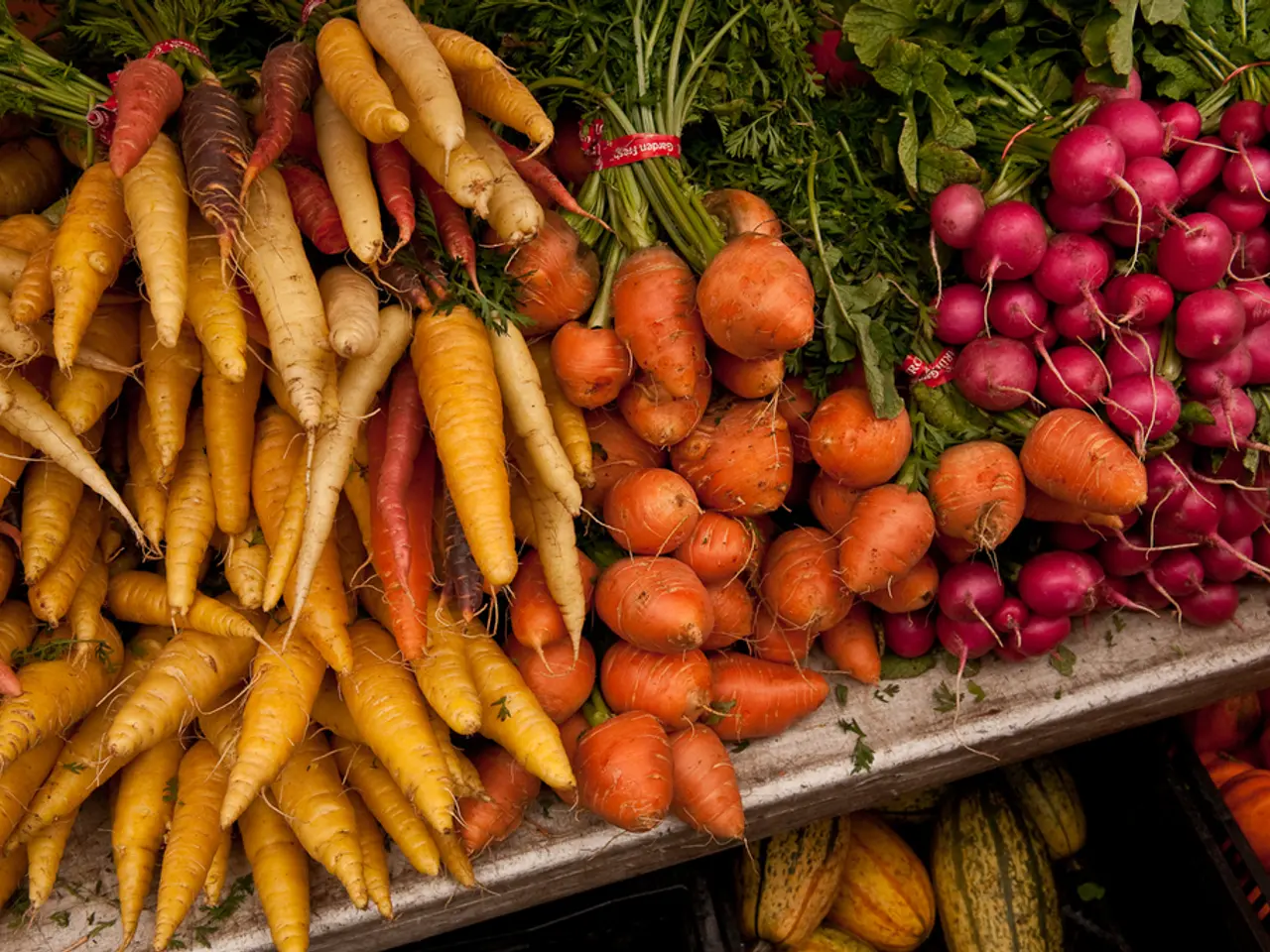Guidelines for Preparing Soil for Vegetable Gardens: A Step-by-Step Pre-Planting Guide
In the world of gardening, a well-prepared vegetable garden is the key to even water distribution, proper plant growth, and a bountiful harvest. Here's a step-by-step guide on how to level, weed, and maintain your garden bed, ensuring it's ready for a successful growing season.
Levelling the Garden Bed
The process of levelling a garden bed is crucial for creating an even surface that promotes healthy plant growth. Before you start, remove any uneven soil, grass, and weeds from the area.
To level the soil, spread at least 2 to 3 inches of compost or aged manure onto your soil (no more than 4 inches). For a more nutrient-rich mix, combine manure with a source of nitrogen, such as lawn clippings and vegetable scraps.
Pumice, perlite, vermiculite, and sand function primarily as wedges that separate soil particles, increasing soil porosity and aeration. However, these materials should be used sparingly, as they can affect the water-holding capacity of the soil.
Once you've added your amendments, mix them into the soil using a shovel or garden fork. After levelling, use a rake to smooth out the surface, and a level tool to ensure the surface is truly flat. If necessary, prop up low spots with bricks or 2x4s, and use wooden boards secured with stakes to create raised beds.
Weed, Rock, and Debris Removal
To efficiently remove weeds, rocks, and debris from a vegetable garden, the best approach combines physical removal, soil preparation, and preventive covers.
For weed removal, hand weeding, hoeing, using garden knives like a hori hori or soil knife, and applying vinegar-based sprays or boiling water can all be effective methods.
To remove rocks and debris, manually remove visible rocks and debris by raking or digging before planting. For larger volumes of soil, use a soil sifter or screen.
Preventive measures such as mulching, covering with cardboard or landscape fabric, tarping, false seeding, and cover crops can help suppress weed growth and maintain a clean garden bed.
Soil Testing and Amendments
Testing soil drainage, type, pH, and nutrient levels is essential for understanding the soil conditions for vegetable gardens. Soil test kits can check the levels of nitrogen, phosphorus, and potassium, and a sample can be sent to a lab for more accurate results.
Wood by-products such as sawdust and bark mulch can be used as organic matter to improve soil structure and add nutrients. However, ensure the organic matter has not been treated with herbicides to avoid harming your plants.
A Winter Cover Crop for Western Oregon
Crimson clover is an excellent winter cover crop for Western Oregon, providing 3-4 pounds of nitrogen per 1,000 square feet when rototilled or disced under in late April.
By following this comprehensive guide, you'll be well on your way to a thriving vegetable garden. Happy gardening!
[1] Kellogg, G., & Patterson, M. (2018). The Vegetable Gardener's Bible. Rodale Books. [2] Smith, G. (2017). The Complete Guide to Composting. Storey Publishing. [3] Hemenway, T. (2009). Gaia's Garden: A Guide to Home-Scale Permaculture. Chelsea Green Publishing. [4] Pawlak, J. (2016). The Organic Gardener's Handbook of Natural Pest and Disease Control. Storey Publishing. [5] Knott, S. (2013). The No-Dig Garden: A Revolutionary Approach to Growing Your Own. Timber Press.
Maintaining a successful home-and-garden involves not only gardening but also caring for one's home-and-garden lifestyle. As part of this lifestyle, preparing a vegetable garden meticulously with proper levelling, weed removal, and amendments can ensure even water distribution, proper plant growth, and a bountiful harvest.
Following a guide like the one mentioned here, incorporating levels, weed removal techniques, soil testing, and amendments into your gardening routine can significantly contribute to a thriving vegetable garden, complementing your home-and-garden lifestyle.




